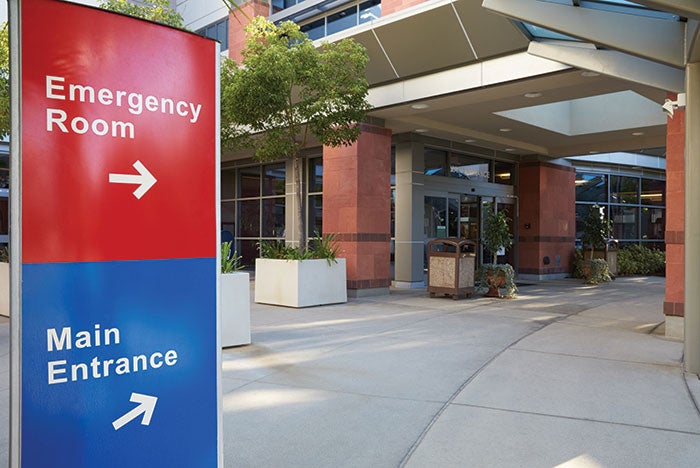Integrating security into health care renovation projects

Multiple entry points are among the biggest security challenges at older facilities.
One of the biggest challenges for hospitals that are seeking to improve the security of their buildings is the number of entry points at older facilities.
“Having a building access plan and limiting the number of entry points to a building is one of the main things health care organizations can do to enhance security,” says Thomas A. Smith, CHPA, CPP, president, Healthcare Security Consultants Inc. Smith is past chair of the International Association for Healthcare Security & Safety (IAHSS) and current chair of the organization’s guidelines council. He says there are obvious differences among the security needs during normal business hours, nights and weekends, and the design must consider these differences and accommodate scaling of security operations.
Also in this article |
| Hospital designs to bolster security |
| Guidelines help to achieve safer designs |
|
“Probably the biggest factor that older hospitals might be dealing with is that they’ve got more entrances now than they really want,” says William Hawk III, AIA, LEED AP, principal architect, health care, EwingCole. Declaring entrances no longer active, for security reasons, can present wayfinding and operational issues.
“Extra entrances do pose a problem,” agrees Leslie Kipps, AIA, LEED AP, EDAC, principal architect, health care, EwingCole. “Sometimes those entrances are actually used as egress exits, so it’s not an option to block them altogether.”
Natalie Petzoldt, AIA, LEED AP, EDAC, St. Louis health market leader, CannonDesign, says that in mapping operational flows for a recent renovation project at a hospital in the Southeast that was built in the 1960s and expanded over several years, the project team learned of 23 different entry doors on campus. Upon review, the client “immediately said, ‘This is why security is such an issue here, right?’” says Petzoldt. “They couldn’t afford to staff a security guard at every one of those entrances. If we were to build a brand new replacement hospital, we would probably consolidate that down to maybe half a dozen open entry points.” Shutting down doorways or restricting them only to staff can create longer walking distances for patients. Roving security guards or electronic monitoring technology can help to manage this type of situation, Petzoldt says.
Risk assessments can identify security issues at existing buildings, says Kevin M. Tuohey, CHPA, executive director of research and compliance, Boston University and Boston Medical Center, and president-elect of the IAHSS. “If you’ve got an existing building and you’re going through some sort of renovation project, get an assessment group together,” he says.
When renovation isn’t possible, operational changes, technology and training can help to manage risks. “I’ve worked in a lot of really old buildings that did not have opportunities for renovation. But that didn’t mean I couldn’t identify the risks and then mitigate them through training, through collaborative efforts and through coming up with plans that allowed me to work within that environment as safely as I could,” Tuohey says.




